-
 bitcoin
bitcoin $109523.663807 USD
-0.13% -
 ethereum
ethereum $4019.526508 USD
2.06% -
 tether
tether $1.000482 USD
0.00% -
 xrp
xrp $2.776815 USD
0.18% -
 bnb
bnb $958.942396 USD
0.12% -
 solana
solana $204.294698 USD
3.84% -
 usd-coin
usd-coin $0.999693 USD
0.00% -
 dogecoin
dogecoin $0.232115 USD
2.09% -
 tron
tron $0.338028 USD
0.84% -
 cardano
cardano $0.790920 USD
1.50% -
 hyperliquid
hyperliquid $44.871443 USD
5.60% -
 ethena-usde
ethena-usde $1.000322 USD
0.04% -
 chainlink
chainlink $21.034165 USD
2.60% -
 avalanche
avalanche $28.794831 USD
-0.54% -
 stellar
stellar $0.360466 USD
1.24%
Is a pile-up in the volume histogram a sign of major players entering the market? When should this trend be triggered?
A volume pile-up in a histogram often signals institutional activity, especially when sustained high volume occurs without significant price movement, indicating accumulation or distribution by major players.
Sep 19, 2025 at 02:01 am
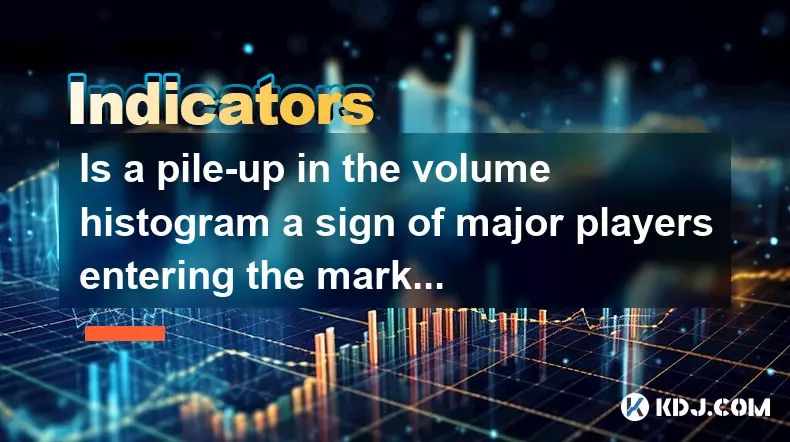
Pile-Up in Volume Histogram: Indicator of Major Player Activity
1. A noticeable pile-up in the volume histogram often signals concentrated trading activity within a specific price range. This clustering suggests that large volumes are being exchanged at particular levels, which is commonly associated with institutional or whale participation. These market participants typically execute large orders over time to avoid slippage, leading to sustained volume accumulation.
2. The presence of elevated volume at a sideways or consolidating price point can indicate accumulation. When major players build positions, they do so discreetly, avoiding sharp price spikes. The volume histogram reflects this through repeated high-volume candles without significant breakout movement, hinting at controlled buying or selling pressure.
3. It's crucial to analyze the context of the pile-up. If it occurs after a prolonged downtrend, increased volume may reflect bottom-fishing by smart money. Conversely, a volume surge during an uptrend could represent distribution or continued momentum building, depending on price action confirmation.
4. Volume pile-ups near key support or resistance zones carry more weight. When combined with candlestick patterns such as bullish engulfing or pin bars, these formations strengthen the probability of institutional involvement. Traders should cross-verify with order book depth and on-chain metrics for higher accuracy.
5. Not every volume spike indicates major player entry. Retail-driven pumps, especially in low-cap altcoins, can also generate sudden volume surges. Distinguishing between genuine accumulation and speculative frenzy requires assessing the sustainability of volume and alignment with broader market structure.
Conditions for Confirming Institutional Entry Through Volume
1. Sustained high volume over multiple sessions, rather than a single spike, increases the likelihood of institutional activity. Whales rarely complete their positions in one go, instead using time and repetition to mask intent.
2. Price stability amid rising volume is a strong signal. If price remains relatively flat while volume climbs, it suggests balanced but active markets—often seen when large entities absorb supply without moving the market aggressively.
3. Confirmation comes when price eventually breaks out of the consolidation zone with continued strong volume. A breakout on declining volume may indicate a false move, whereas a breakout supported by expanding volume aligns with genuine momentum initiation.
4. Correlation with blockchain data enhances reliability. For example, an increase in exchange outflows coinciding with a volume pile-up suggests coins are being moved to cold storage, a behavior typical of long-term holders or institutions securing assets.
5. Market sentiment and macro indicators should not be ignored. Even with compelling volume signals, adverse news or regulatory developments can delay or negate expected moves. Aligning technical volume analysis with fundamental context improves decision-making precision.
Timing the Trigger Based on Volume Accumulation
1. The optimal trigger occurs when price closes decisively beyond the consolidation range established during the volume pile-up. Waiting for a daily or 4-hour close outside this zone helps filter out noise and traps set by liquidity hunters.
2. Volume must expand on the breakout. A breakout candle showing volume significantly above average confirms participation from larger players. Diminished volume suggests lack of conviction, increasing the risk of reversal.
3. Retests of the breakout level offer secondary entry opportunities. If price returns to test the former resistance (now support) with reduced volume, it often validates the new trend direction. Such retests are common in markets where institutions leave residual orders to accumulate more at better prices.
4. Confluence with moving averages or Fibonacci extensions strengthens the setup. For instance, a breakout coinciding with a retest of the 200-day MA and aligned with a 1.618 extension adds layers of validation beyond volume alone.
5. Risk management remains essential. Position sizing should account for volatility during breakout phases. Placing stop-loss orders below the consolidation zone or using volatility-based stops helps protect capital if the move fails.
Frequently Asked Questions
What distinguishes a real volume pile-up from retail-driven noise?Real accumulation shows consistent volume across several days without erratic price swings. Retail noise usually results in sharp, short-lived spikes followed by quick reversals and low follow-through volume.
Can volume pile-ups occur during downtrends?Yes, they can appear during downtrends and may indicate either heavy distribution by insiders or aggressive buying at lower levels. Contextual analysis with on-chain flows and funding rates helps differentiate between the two.
Is it safe to enter during the accumulation phase before breakout?Entering early carries higher risk due to uncertainty about breakout timing. However, scaling in gradually during accumulation with tight risk control can improve average entry price if the eventual breakout occurs.
How reliable is the volume histogram across different exchanges?Reliability varies. High-liquidity exchanges like Binance or Coinbase provide more accurate volume data. Low-volume platforms may exhibit manipulated or inflated figures, making cross-exchange comparison critical.
Disclaimer:info@kdj.com
The information provided is not trading advice. kdj.com does not assume any responsibility for any investments made based on the information provided in this article. Cryptocurrencies are highly volatile and it is highly recommended that you invest with caution after thorough research!
If you believe that the content used on this website infringes your copyright, please contact us immediately (info@kdj.com) and we will delete it promptly.
- XRP Tundra: Dual-Token Innovation in the XRP Ecosystem
- 2025-09-27 20:25:12
- MUTM: Is This Crypto the Smartest Buy Now?
- 2025-09-27 20:25:12
- Crypto Millionaires: Unlocking Financial Freedom with the Right Investments
- 2025-09-27 20:30:01
- ETH Price Check: Crypto Analysts Favor These Moves Now
- 2025-09-27 20:30:01
- BlockchainFX, Bitcoin Hyper, and Crypto Presales: Finding the Next Big Thing
- 2025-09-27 20:30:01
- Galaxy CEO, Bitcoin, and the Powell Replacement: A $200K Prediction?
- 2025-09-27 20:30:15
Related knowledge
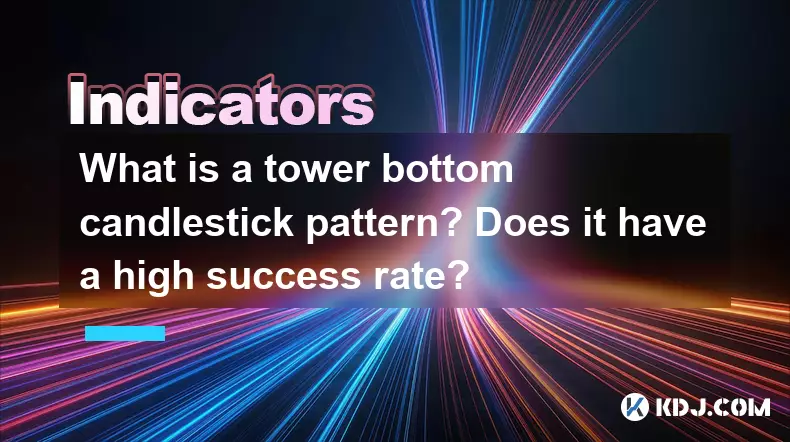
What is a tower bottom candlestick pattern? Does it have a high success rate?
Sep 22,2025 at 07:18am
Tower Bottom Candlestick Pattern Explained1. The tower bottom candlestick pattern is a reversal formation that typically appears at the end of a downt...
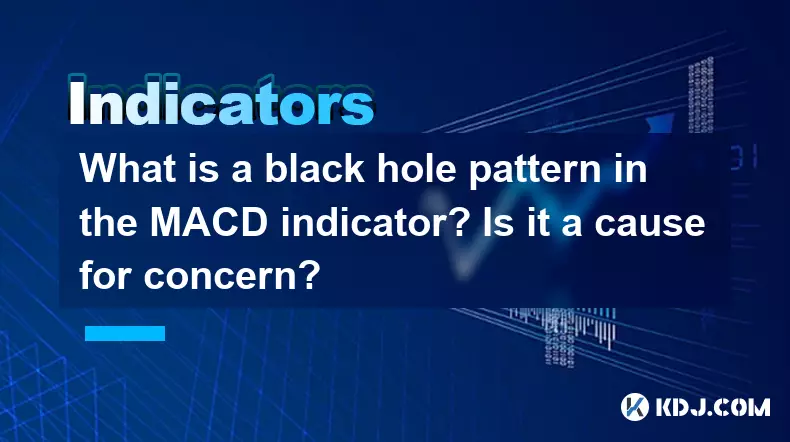
What is a black hole pattern in the MACD indicator? Is it a cause for concern?
Sep 21,2025 at 06:54pm
Bitcoin's Role in Decentralized Finance1. Bitcoin remains the cornerstone of decentralized finance, serving as a benchmark for value and security acro...

How can I use the psychological line (PSY) to determine market sentiment?
Sep 17,2025 at 02:19pm
Understanding the Psychological Line (PSY) in Cryptocurrency TradingThe Psychological Line, commonly referred to as PSY, is a momentum oscillator used...
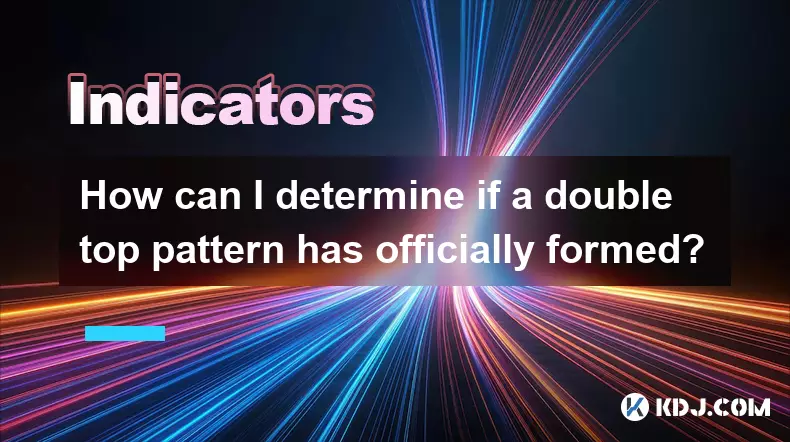
How can I determine if a double top pattern has officially formed?
Sep 21,2025 at 03:18am
Understanding the Structure of a Double Top Pattern1. A double top pattern consists of two distinct peaks that reach approximately the same price leve...
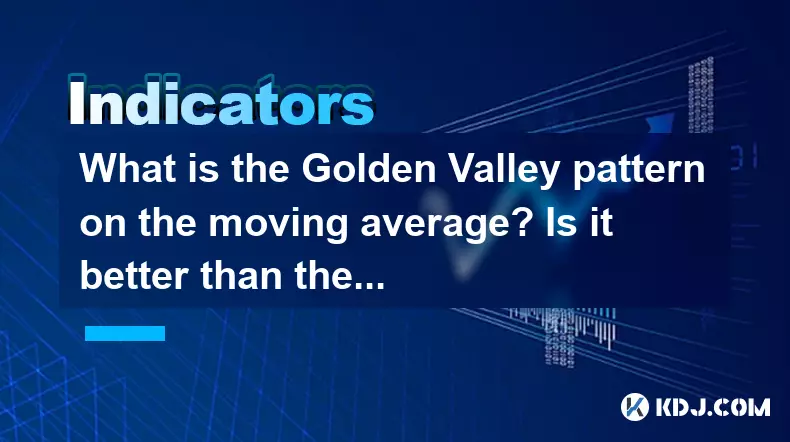
What is the Golden Valley pattern on the moving average? Is it better than the Silver Valley pattern?
Sep 21,2025 at 02:54pm
Understanding the Golden Valley Pattern in Moving Averages1. The Golden Valley pattern is a technical formation observed in cryptocurrency price chart...

What does a death cross of the RSI in the strong zone (above 50) mean?
Sep 17,2025 at 10:54pm
Understanding the Death Cross in RSI Context1. The term 'death cross' is traditionally associated with moving averages, where a short-term average cro...

What is a tower bottom candlestick pattern? Does it have a high success rate?
Sep 22,2025 at 07:18am
Tower Bottom Candlestick Pattern Explained1. The tower bottom candlestick pattern is a reversal formation that typically appears at the end of a downt...

What is a black hole pattern in the MACD indicator? Is it a cause for concern?
Sep 21,2025 at 06:54pm
Bitcoin's Role in Decentralized Finance1. Bitcoin remains the cornerstone of decentralized finance, serving as a benchmark for value and security acro...

How can I use the psychological line (PSY) to determine market sentiment?
Sep 17,2025 at 02:19pm
Understanding the Psychological Line (PSY) in Cryptocurrency TradingThe Psychological Line, commonly referred to as PSY, is a momentum oscillator used...

How can I determine if a double top pattern has officially formed?
Sep 21,2025 at 03:18am
Understanding the Structure of a Double Top Pattern1. A double top pattern consists of two distinct peaks that reach approximately the same price leve...

What is the Golden Valley pattern on the moving average? Is it better than the Silver Valley pattern?
Sep 21,2025 at 02:54pm
Understanding the Golden Valley Pattern in Moving Averages1. The Golden Valley pattern is a technical formation observed in cryptocurrency price chart...

What does a death cross of the RSI in the strong zone (above 50) mean?
Sep 17,2025 at 10:54pm
Understanding the Death Cross in RSI Context1. The term 'death cross' is traditionally associated with moving averages, where a short-term average cro...
See all articles









































































